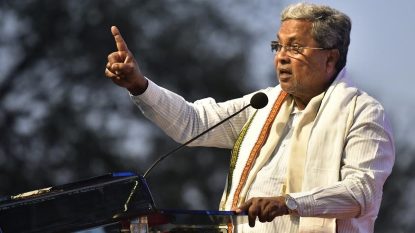
Shukrayaan-1: Probing surface and atmosphere of planet Venus
Team Udayavani, Dec 23, 2023, 2:18 PM IST

A research team’s suggestion that there may be phosphine (PH3) gas— a potential indicator of life—in Venus’s atmosphere has sparked renewed interest in Earth’s closest neighbour. While NASA currently casts doubt on the possibility of life on Venus, some scientists have not dismissed the potential existence of microbes in the upper atmosphere, where the pressure is more similar to Earth’s surface.
There have been over 40 launches of spacecraft bound for Venus. Recent explorations of Venus involve the European Space Agency’s Venus Express, in orbit from 2006 to 2016; and Japan’s Akatsuki Venus Climate Orbiter, operational since 2016. NASA’s Parker Solar Probe has also conducted several flybys of Venus. In February 2022, NASA reported the successful capture by the spacecraft on its fourth flyby in February 2021 of initial visible light images of Venus’s surface.
The Kosmos 482 Descent Craft, 1972-023E, a Soviet probe to Venus in 1972 that would have landed the mission on Venus, failed to leave Earth’s orbit. In the past 50 years, its orbit has shrunk by over 7,000 kilometres, putting it on a crash course with Earth. It is now in its final trajectory around Earth. Experts believe that. The object set to crash is not only the lander, but could include a substantially larger chunk of the original Venera bus. It could re-enter Earth’s atmosphere around 2025-2026.
India’s Shukrayaan Mission
The ISRO Venus Orbiter Mission, Shukrayaan-1—initially scheduled for mid-2023 but pushed back by the pandemic—marks ISRO’s inaugural mission to Venus. It aims to deploy a spacecraft that will orbit the planet and explore its sub-surface characteristics given that Venus is the hottest planet in our solar system. In May 2022, ISRO chairman S Somanath had announced that the launch was planned for December 2024, with an alternative launch window in 2031.
Later, while speaking at the Indian National Science Academy in Delhi in early-October, Somanath mentioned that numerous missions were in the conceptual phase, with a mission to Venus already configured and the relevant payloads developed. However, ISRO is yet to disclose crucial details, such as the launch date and other key aspects of the project.
What Does The Name Mean?
The name, Shukrayaan, is a blend of two Sanskrit words, ‘Shukra’, meaning Venus, and ‘Yaana’, being craft. The concept of ‘Shukrayaan-1’ emerged in 2012 when ISRO invited payload proposals from research institutes. The primary aim of the mission is to comprehensively explore Venus, often referred to as ‘Earth’s twin’. This would involve studying both the surface and atmosphere of Venus, along with analysing its geological composition.
Venus: Fiery Transformation
Venus is a challenging planet with an atmosphere filled with sulphuric acid and its surface temperatures are hot enough to melt lead, which has a melting point of 327.5°C. However, it has not always been like this. Scientists believe Venus, initially, resembled Earth. But what led to this transformation? Any insight into what went wrong with Venus’s atmosphere could help us better understand—and so protect—Earth. On Earth, carbon is primarily trapped in rocks. But, on Venus, a runaway global hothouse, it has been released into the atmosphere, resulting in the formation of approximately 96% carbon dioxide (CO2).
This has triggered an uncontrolled ‘greenhouse effect’, causing surface temperatures to soar to 470°C. ‘Greenhouse effect’ refers to the trapping of heat in a planet’s atmosphere by certain gases—such as carbon dioxide, which allows sunlight to enter, but prevents some of the heat from escaping back into space. This process helps regulate the temperature on Earth and other planets. However, when it intensifies, as seen on Venus, it leads to a significant rise in surface temperatures.
The challenging surface conditions on Venus have deterred planetary exploration missions. With scorching temperatures and pressures reaching 90 bars (similar to being one kilometre underwater), capable of instantly crushing most planetary landers, it is not surprising that missions to Venus have not always been successful. On Earth’s surface, we experience an atmospheric pressure of approximately 1 bar, equivalent to the pressure at sea level.
In 1970, the Soviet Union achieved the first landing on Venus with Venera 7, despite the parachute melting during the descent. Remarkably, it transmitted valuable data back to Earth for 20 minutes. Subsequent surface images were captured by Venera 9 and this was later followed by Veneras 10, 13 and 14.
NASA’s Focus, Too, Is On Venus
While Mars has often been the primary focus of American space endeavours, the Mariner and Pioneer programmes in the 1960s and 1970s focused attention on Venus. In 1962, Mariner-2 became the first American spacecraft to reach Venus. It found cooler temperatures in the clouds, but extreme heat on the surface.
The Pioneer missions in 1978 offered a closer examination, with the first orbiter observing the planet for nearly 14 years. It unveiled insights into the enigmatic Venus atmosphere, noting a smoother surface than Earth and the possibility of little-to-no magnetic field. A subsequent Pioneer mission deployed probes into Venus’s atmosphere, yielding data on cloud structure and radar readings of the surface.
In 1990, NASA’s Magellan entered Venus’s orbit, spending four years mapping the surface and investigating signs of plate tectonics. The findings indicated that approximately 85% of the surface was covered in ancient lava flows, suggesting substantial past and potential current volcanic activity.
Plate tectonics is the idea that Earth’s outer layer is divided into plates. These plates move and interact, causing earthquakes, volcanic eruptions and the formation of mountains. The Earth’s surface changes over time as these plates collide—pulling apart, or sliding against each other—influencing our planet’s dynamic geological features.
Girish Linganna
Aerospace & Defence Analyst
(The author of this article is a Defence, Aerospace & Political Analyst based in Bengaluru. He is also Director of ADD Engineering Components, India, Pvt. Ltd, a subsidiary of ADD Engineering GmbH, Germany. You can reach out to him at: [email protected])
Udayavani is now on Telegram. Click here to join our channel and stay updated with the latest news.
Top News
Related Articles More

India flight tests missile-assisted torpedo release system

‘Real observations’ of galaxies support existence of invisible dark matter: Study

Samsung reports a 10-fold increase in profit as AI drives rebound in memory chip markets

ISRO delayed Chandrayaan-3 launch by 4 seconds to dodge space debris, report says

ISRO releases ISSAR 2023 report on vulnerability of space assets to collisions
MUST WATCH
Latest Additions

Deve Gowda planned escape of his grandson Prajwal, says Siddaramaiah

In ‘Leningrad of Bihar’, Left contends with saffron surge

Amit Shah doctored video: Telangana CM’s lawyer appears before Delhi Police

Congress alleges PM knew about Hassan MP Prajwal Revanna’s “crime”, yet appealed for votes for him

Congress’ promise of Rs 400 per day national minimum wage is real ‘400 paar’: Jairam Ramesh
























